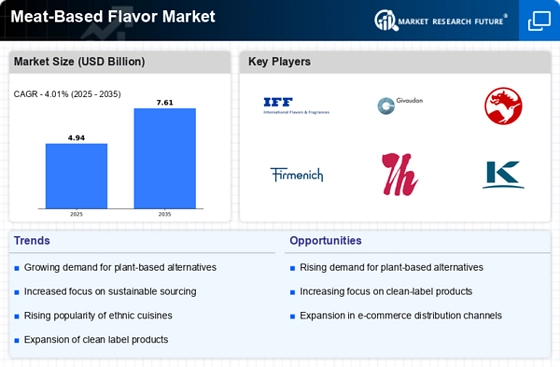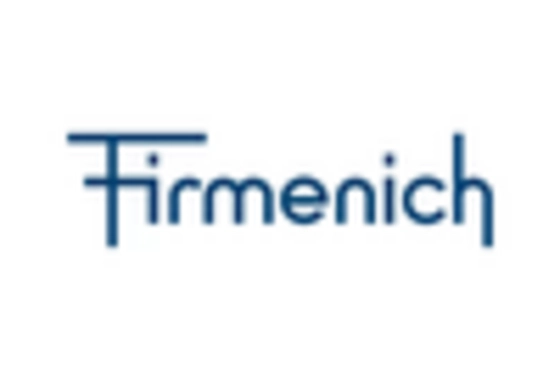Rising Demand for Umami Flavors
The Meat-Based Flavor Market experiences a notable increase in demand for umami flavors, which are often associated with meat products. This trend is driven by consumer preferences for rich, savory tastes that enhance the overall eating experience. Research indicates that umami flavors can significantly elevate the palatability of various dishes, leading to their incorporation in a wide range of food products. As consumers become more adventurous in their culinary choices, the Meat-Based Flavor Market is likely to see a surge in the development of innovative flavor profiles that cater to this demand. Furthermore, the growing popularity of international cuisines, which often emphasize umami, contributes to this trend, suggesting a robust future for meat-based flavor innovations.
Advent of Flavoring Technologies
Technological advancements in flavoring technologies are significantly impacting the Meat-Based Flavor Market. Innovations such as encapsulation and extraction techniques allow for the development of more concentrated and stable meat flavors. These technologies enable manufacturers to create flavors that are not only more intense but also have a longer shelf life, which is crucial for the food industry. Furthermore, advancements in sensory analysis and consumer testing are helping companies better understand flavor preferences, leading to more targeted product development. As these technologies continue to evolve, the Meat-Based Flavor Market is poised to benefit from enhanced flavor profiles that meet the changing tastes of consumers, potentially leading to increased market share and profitability.
Sustainability and Ethical Sourcing
Sustainability and ethical sourcing are becoming increasingly important in the Meat-Based Flavor Market. Consumers are more aware of the environmental and ethical implications of their food choices, leading to a demand for flavors derived from responsibly sourced meat. This trend is prompting manufacturers to adopt sustainable practices in their supply chains, ensuring that the meat used for flavoring is sourced from farms that prioritize animal welfare and environmental stewardship. Market Research Future indicates that products marketed as sustainable are gaining traction among consumers, suggesting a shift in purchasing behavior. As sustainability becomes a key factor in consumer decision-making, the Meat-Based Flavor Market must adapt to these expectations, potentially leading to a more responsible and ethical approach to flavor production.
Expansion of the Food Service Sector
The expansion of the food service sector plays a crucial role in shaping the Meat-Based Flavor Market. As dining out becomes increasingly popular, restaurants and food chains are seeking to enhance their menus with robust meat-based flavors that appeal to consumers. This trend is particularly evident in the rise of fast-casual dining establishments, which prioritize flavor and quality. Market data indicates that the food service industry is projected to grow steadily, creating a higher demand for innovative meat-based flavor solutions. Consequently, suppliers in the Meat-Based Flavor Market are likely to benefit from this growth, as they provide essential flavoring agents that help food service operators differentiate their offerings and attract a broader customer base.
Health Consciousness and Clean Label Trends
In recent years, there has been a marked shift towards health consciousness among consumers, influencing the Meat-Based Flavor Market. This trend is characterized by a preference for clean label products, which are perceived as healthier and more transparent. Consumers are increasingly scrutinizing ingredient lists, seeking flavors that are natural and free from artificial additives. This has prompted manufacturers to reformulate their products, focusing on meat-based flavors derived from high-quality, natural sources. Data suggests that products labeled as clean and natural are experiencing higher sales growth compared to conventional options. As health awareness continues to rise, the Meat-Based Flavor Market must adapt to these consumer demands, potentially leading to a more diverse range of offerings that align with health-oriented lifestyles.


















Leave a Comment